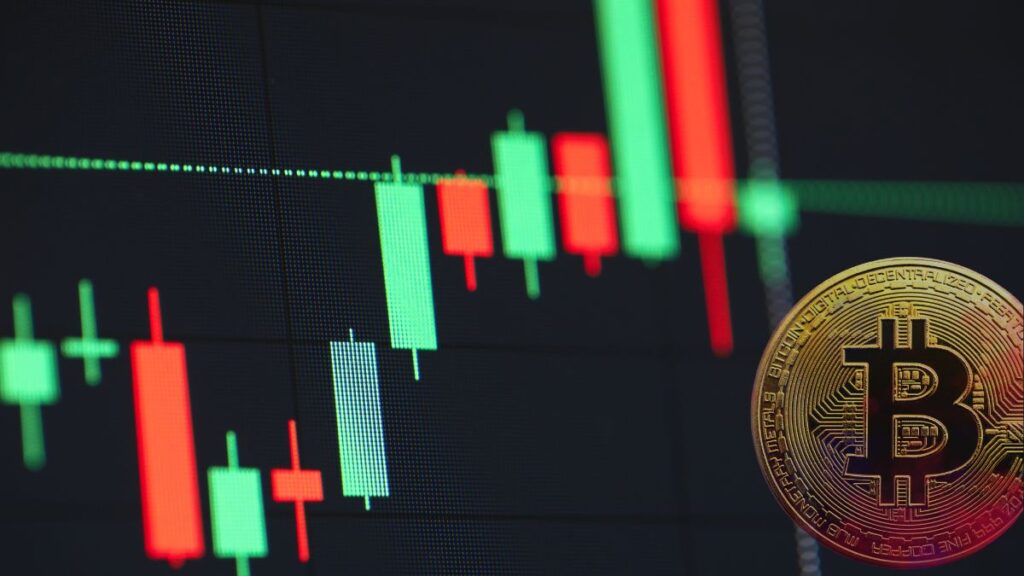Most crypto day traders lose money for simple, avoidable reasons: emotions, poor risk management, and chasing losses. Here are the 10 biggest mistakes and how funded traders avoid them.
Why Day Trading Crypto Is Risky but Rewarding
The crypto market moves fast. Prices can jump or drop in seconds. That volatility can bring big wins, but also big losses.
Unlike the stock market, crypto trades 24/7. There are no closing bells. This makes it tempting to overtrade and harder to step away from the screen.
If you trade with your own savings, one bad move can wipe out a big chunk of your account. Using a funded trading account shifts the risk away from your personal funds while still giving you access to large capital.

Mistake #1 – Letting Emotions Drive Your Trades
Fear of missing out (FOMO) and panic selling are two of the fastest ways to lose money. If you buy because everyone is hyping a coin, or sell just because the price drops, you’re trading on feelings, not facts.
Funded traders avoid this by sticking to a clear plan. They set profit targets and stop-losses before they trade, and they follow risk management rules even when the market is moving fast.
Mistake #2 – Trading Without Real Research
Some traders jump into a trade without checking what’s behind the coin. They skip looking at the project’s news, tokenomics, or updates from the development team. Others ignore technical analysis and enter without knowing the key support and resistance levels.
Both mistakes lead to random trades and higher losses. If you are unsure about terms like “resistance” or “volume,” our Prop Trading Glossary can help you get familiar with the basics before risking capital.
Mistake #3 – Overtrading and Chasing Losses
Crypto’s constant price swings make it easy to think, “just one more trade.” But taking too many trades in a short time usually leads to bad decisions and higher fees.
Chasing losses is even worse. When you try to win back what you lost by trading without a plan, it stops being trading and starts being gambling. Funded traders know when to walk away and stick to their daily limits.
Mistake #4 – Ignoring Position Sizing and Stop-Losses
One simple rule that keeps traders alive is the 2% risk rule. Never risk more than 2% of your account on a single trade. Without limits, small accounts can be wiped out in just a few losing trades.
With a funded account, your capital is protected by set risk rules, which means you can focus on trading well instead of worrying about losing your own money.
Mistake #5 – Using Weak Tools or Platforms
In crypto, even a second of delay can cost you. Slow data feeds or platforms that freeze during high volatility can destroy a winning trade.
Successful traders use platforms with advanced charting, real-time data, and price alerts. Some use trading bots to execute faster, but only after fully testing the strategy behind them.
Mistake #6 – Trading Only One Coin
Many new traders stick to Bitcoin or Ethereum because they are the most well-known. While they offer stability, focusing on just one coin increases your risk. If that coin moves against you, your whole day suffers.
Funded traders diversify within crypto, trading a mix of high-volume coins and select altcoins to spread opportunity and reduce overexposure.
Mistake #7 – Not Keeping a Trade Journal
A trade journal is one of the most overlooked tools in day trading. Record your entry, exit, position size, reason for taking the trade, and how you felt during it.
Funded traders use their journals to spot patterns, fix recurring mistakes, and confirm when they are ready to increase lot size. Without a journal, you risk repeating the same errors over and over.
Mistake #8 – Not Adjusting to Market Conditions
A strategy that works in a bull market will often fail in a bear market. Crypto can reverse sharply after macroeconomic news, regulation updates, or big exchange announcements.
Funded traders stay flexible, switching between momentum plays in bull runs and defensive setups in bearish or choppy markets. Being stubborn with one approach is a fast way to drain your account.
Mistake #9 – Ignoring Fees and Taxes
Every trade comes with a cost. With crypto’s high intraday volatility, frequent trades can quickly stack up fees that eat into your profits. Always factor exchange fees into your P/L calculations.
Short-term crypto gains may also be taxed differently depending on your country. Ignoring this can lead to an unexpected bill at year-end. Smart traders track their trades for both performance and tax reporting.
Mistake #10 – Not Knowing When to Step Away
Overtrading often comes from fatigue, boredom, or frustration. When your focus slips, discipline is the first casualty. This leads to sloppy entries, missed exits, and avoidable losses.
Set clear trading hours and a maximum number of trades per day. Once you hit that limit, walk away, whether you’re up or down.
How Funded Traders Avoid These Mistakes
Professional funded traders follow a strict rule set that keeps them in the game long-term. They stick to defined risk limits, keep position sizes under control, and use capital allocation rules to protect their accounts.
With a prop firm like MasterFunders, traders can scale up to larger accounts without risking their own money, growing their potential while staying disciplined.
Summary – Trade Crypto Like a Pro, Not a Gambler
Day trading crypto can deliver big results, but only if you treat it like a business. It rewards skill, patience, and discipline, not speed or luck.
If you want to skip the slow grind of growing your own account, get funded and trade with MasterFunders’ capital, rules, and support. With instant access to up to $100K and payouts starting at 1% profit, you can focus on execution, not account survival.
Crypto day trading mistakes are avoidable if you know the rules.
Below are the most common questions traders ask about avoiding losses in crypto day trading, along with direct answers based on funded trader experience.
FAQ
What’s the biggest mistake in crypto day trading?
Letting emotions take over—especially FOMO buying or panic selling. Successful traders stick to a plan and follow strict risk rules.
How do I avoid overtrading in crypto?
Set a daily trade limit and fixed trading hours. Once you hit either limit, stop trading to protect your discipline and capital.
Do I need to trade multiple cryptocurrencies?
Yes, if you want to reduce risk. Diversifying across several coins can protect you from heavy losses when one asset underperforms.
How do funded traders manage risk better?
They follow risk management rules that cap losses, control position sizes, and prevent overleveraging.
Are crypto day trading profits taxable?
In most countries, yes. Short-term crypto gains are often taxed at higher rates, so track every trade for accurate reporting.

